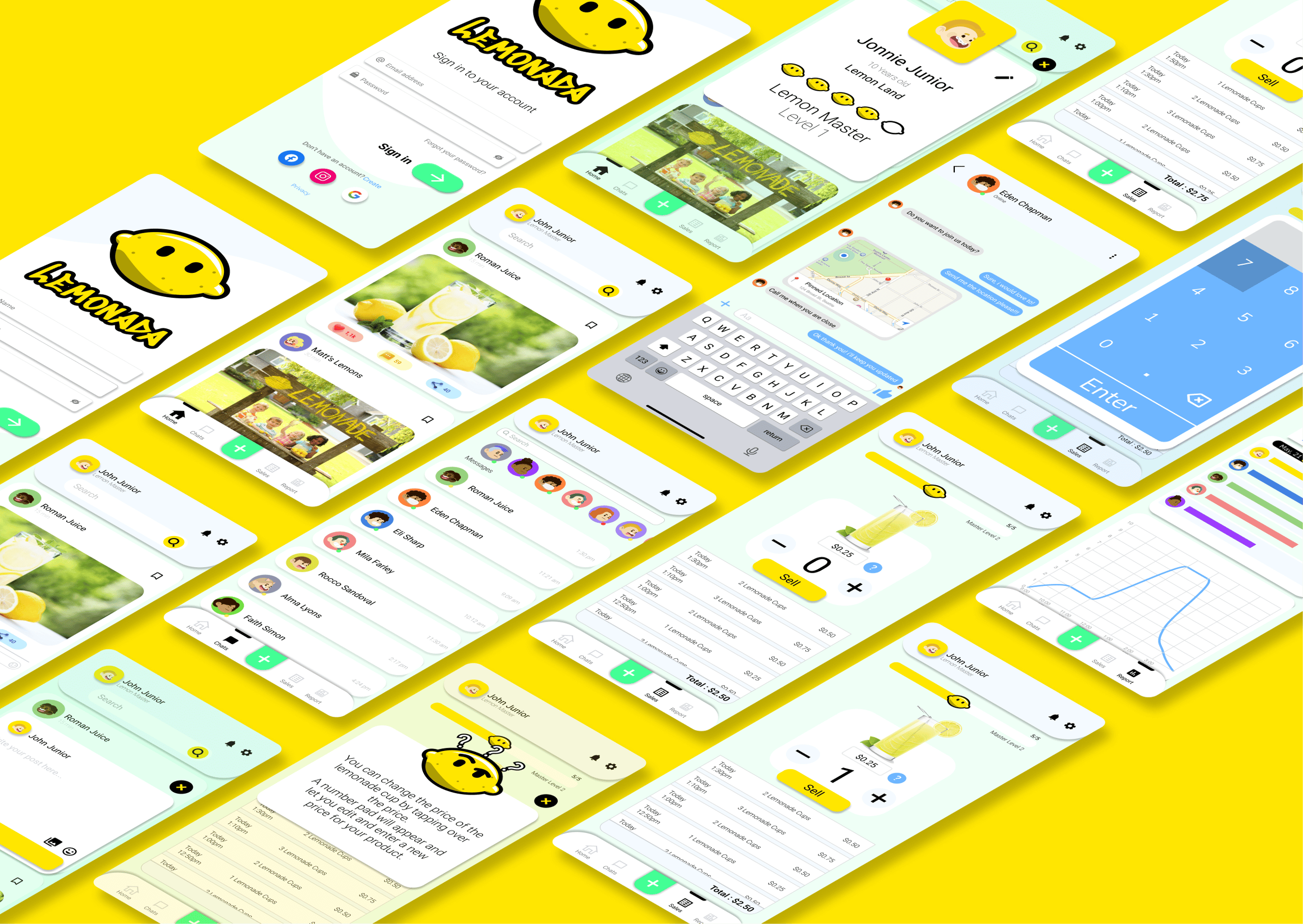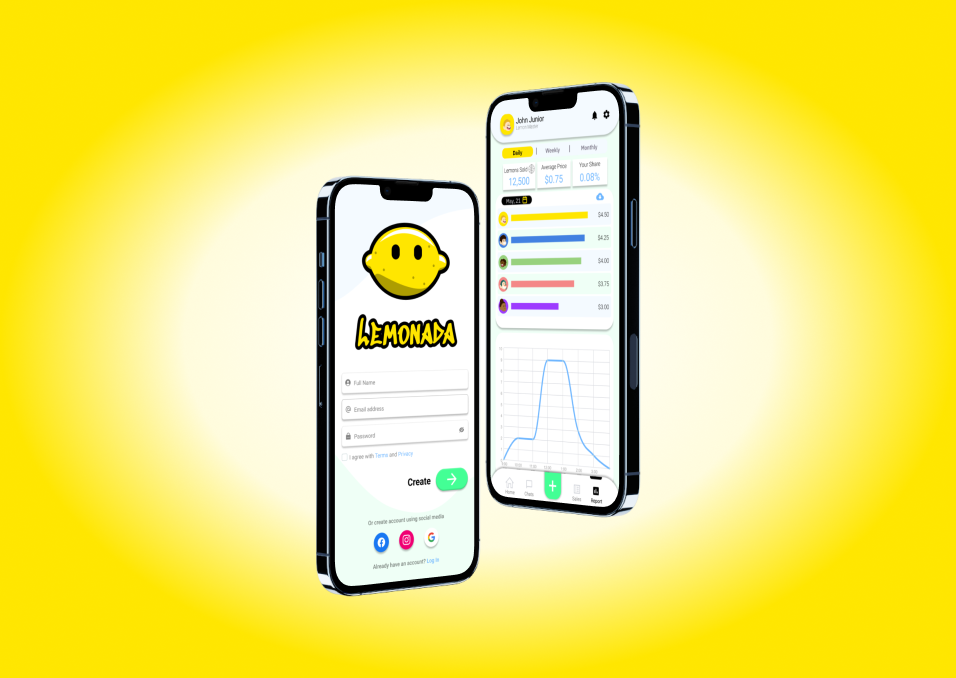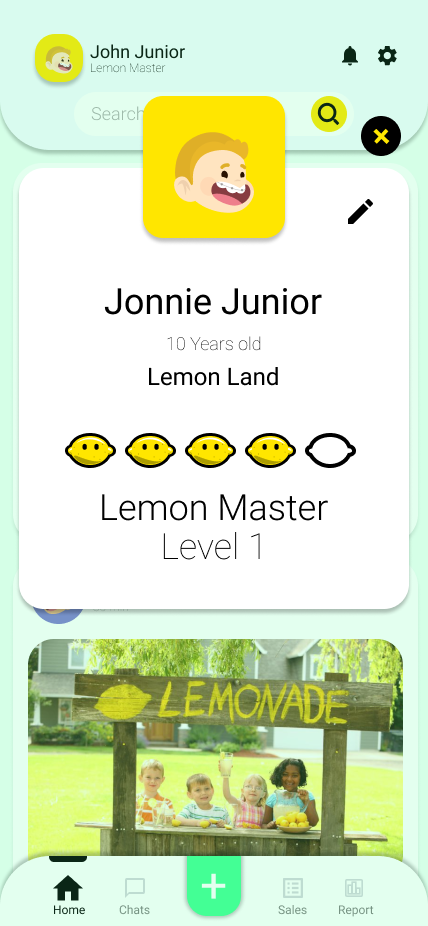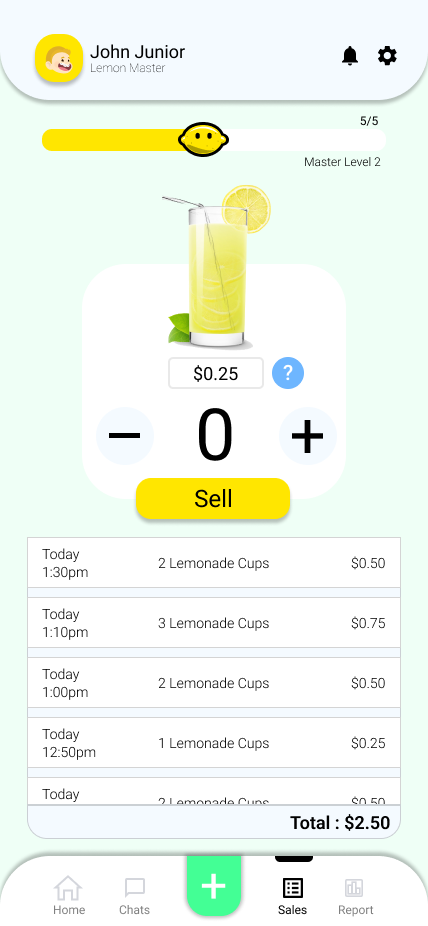Lemonada App
Gamifying the Lemonade Stand Experience for Young Entrepreneurs

Project challenge
Young entrepreneurs who run lemonade stands lack tools designed specifically for their needs. While they're learning valuable business skills, they struggle with tracking sales, managing inventory, and understanding business concepts in an age-appropriate way. Parents want to encourage entrepreneurship and financial literacy but lack engaging tools to support their children's ventures.
The children's educational app market is growing rapidly, but there's a significant gap in applications that combine financial literacy with gamification for young entrepreneurs. Lemonada aims to fill this gap by creating a platform that makes business management fun and educational for children while providing parents with insights into their child's learning journey.

Research Methods
I employed child-focused research techniques to uncover the needs of our young users:
• Contextual Observation
I watched children running real lemonade stands to gain insight into their natural behaviors, obstacles, and interactions.
• Kid-Friendly Interviews
I carried out simplified interviews with 15 children (ages 7-12) who had experience running lemonade stands, using age-appropriate language and visual tools to enhance understanding.
• Competitive Analysis
I analyzed both direct competitors (business applications aimed at children) and indirect competitors (educational games and tools for financial literacy).

Key Research Findings
• Visual Learning
Children showed a strong preference for visual aids rather than text-based instructions and data.
• Achievement Motivation
Young users were motivated by achievements, badges, and clear indicators of progress.
• Social Validation
Children were excited about the chance to connect with peers and compare their accomplishments.
• Simplicity Requirement
Complex processes caused frustration and led to abandonment among younger users.hed children running real lemonade stands to gain insight into their natural behaviors, obstacles, and interactions.

User Flow
Preliminary sketches highlight the fundamental possibilities of the design concept. Each line signifies a possible pathway through the intricate user flow challenges.

Wireframes
I developed low-fidelity wireframes to define the fundamental structure and functionality. The wireframes emphasized:
• Large, touch-friendly interface elements
• An appropriate visual hierarchy for children
• Streamlined data entry methods
• Clear feedback mechanisms


Completed design solution
The final design represents a perfect blend of user needs, business goals, and elegant interface design.






